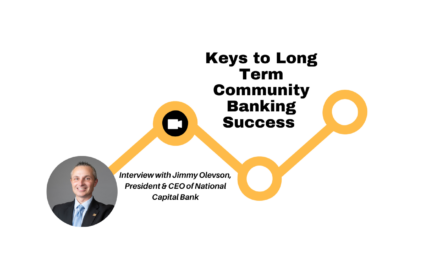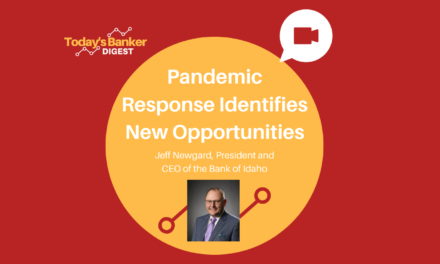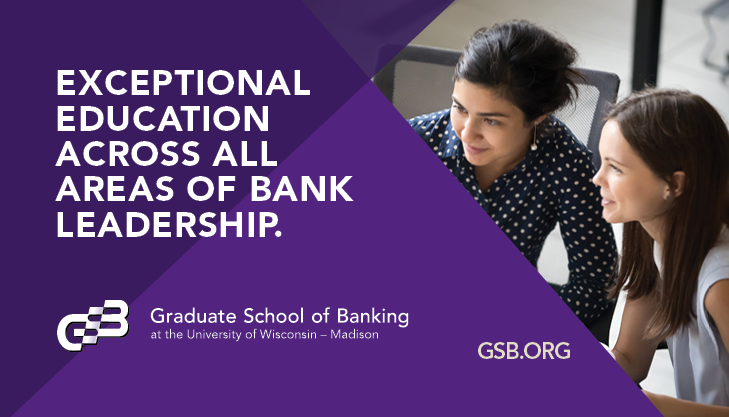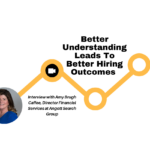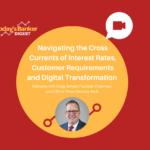Tactics to Win in a K-Shaped Recovery
Financial institutions are in another strategic planning and budgeting season, and this one has more uncertainty than ever before. Even the dire financial crisis era had some generally predictable, if sobering, trendlines that financial executives could get their heads around as they planned ahead for the next year or so.
College of William & Mary adjunct professor Peter Atwater coined the term “K-shaped recovery,” positing that profound and persistent economic inequality is likely to produce not a single broad course of recovery for the economy as a whole, but multiple vectors. Positive outcomes for some, negative for others; and even within that, steeper for some and shallower for others.
Add to those variables the lack of consensus as to when a recovery of any shape might actually even begin, and it hardly portends a certain future to which boards and management teams will be eager to commit precious limited resources.
Ready or not, the calendar pages will continue to fly by regardless, and financial institutions can’t afford to just sit back and just see what happens. While the natural inclination might be to slow down and delay action given so much uncertainty, that will only create a bigger gap to close. A better approach is to embrace the uncertainty and actually move faster, but with these three tenets in mind.
First, don’t ignore the underlying long-term trends. Like everything else in our lives, all aspects of banking have been becoming more digital and more mobile for well over a decade now. Customers of all types and all ages are increasingly comfortable using digital technology, and the pandemic forced most of the stragglers to finally cross that Rubicon. Straggling bankers crossed along with them as they were forced to serve customers in new ways, with many pleasantly surprised by the results of even their improvised efforts.
Those trends are not going away, and now is the time to double down. We are hearing from many institutions that current branch traffic is a tiny fraction of prior volumes, and it appears unlikely to come all the way back for a long time, if ever again. Leadership teams need to take a hard look at branch locations and activities to free up valuable resources. They should look at reinvesting some of the savings into ATMs, ITMs, mobile banking, chatbots, and other digital tools that can meet customer needs more efficiently. The greater risk is inaction.
Secondly, leaders must look at their strategic plans and budgets through both offensive and defensive lenses. A recessionary environment, falling revenues, and rising credit costs are all good reasons to take defensive measures like rationalizing non-interest expenses, but institutions should not ignore the unique opportunities to play offense now.
It takes both offense and defense to win over the long run, and it’s important to understand the differing implications for each. The overarching objective in playing defense is not losing. That includes taking defensive actions to blunt the impact of competitors, such as digitizing basic transactions and servicing. Only a handful of institutions with big teams and budgets can truly vie to win the digital arms race. Sometimes ‘good enough’ really is good enough, so any efforts that go beyond achieving parity in some areas amount to a waste of limited resources that could better be reallocated towards other objectives.
Playing offense is all about winning, and that means finding opportunities to build and maintain real differentiation from the competition. The biggest risk when playing offense is backing off the gas before you cross the finish line. That’s not to say that whoever spends the most always wins, but any resources conserved through avoiding waste in playing defense should be considered for reallocation to make sure that offensive moves achieve victory.
Smaller institutions in particular like to tout their intimate customer relationships and perceived superior customer service, and often cite that advantage to explain their reluctance to lean too far into digital banking. This is exactly where the best opportunities are to play offense and win. Institutions need to allocate resources now for urgently meeting customers’ needs and preferences that are changing in the post-pandemic world, especially in light of K-shaped divergent paths. Differentiate to win.
Finally, boards and leadership teams have to build flexibility and agility into their planning and budgeting process. The answers they need to win are not in their conference rooms or forecast models; they are in the market, with their customers and prospects. They need a better way to find them and incorporate them quickly into the planning and budgeting process.
This doesn’t mean throwing money at unproven ideas with vague hopes of striking gold, it means a disciplined and urgent focus on uncovering and meeting changing customer needs. It means breaking down high-stakes projects into smaller actionable pieces to be able to turn those questions into answers quickly and cheaply. And it means empowering internal teams with the ability to act urgently on what they learn without unnecessary bureaucracy. Risk management practices have to be scaled appropriately to support flexibility and agility.
Times of great change are also times of great opportunity, and the time to act is now.
JP Nicols is cohost of Breaking Banks, the #1 global fintech radio show and podcast, and cofounder of the Alloy Labs Alliance, the industry-leading innovation consortium of community and mid-sized banks. He is a frequent speaker and serves on the faculty at the Graduate School of Banking at the University of Wisconsin-Madison and the GSB Digital Banking School – both of which are currently accepting 2021 enrollments at www.gsb.org Follow him on Twitter: @JPNicols


